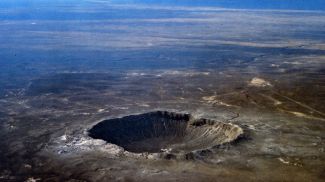
MUGLA, 10 December (BelTA - Anadolu) - Ongoing excavations at the
3,000-year-old Temple of Hecate in Lagina, a center of ancient pagan
beliefs located in Türkiye's southwestern province of Mugla, have
revealed significant archaeological finds.
A torch of the goddess Hecate and a figurative Corinthian column capital from the 2nd century AD have been unearthed at the ancient site.
Bilal Sogut, head of the Stratonikeia and Lagina Excavation Team, told Anadolu that the team has been working for a year as part of the "Heritage for the Future Project," conducting archaeological excavations, drawings, and restoration efforts at the site.
Sogut emphasized the importance of the Lagina site, located about 8.5 kilometers (5.2 miles) from the ancient city of Stratonikeia, which served as its religious center.
He highlighted that the largest temple dedicated to Hecate was located in Lagina, making it an even more significant sacred site.
"We had made some determinations about how the entrance section looked," said Sogut, explaining the team's focus on the ceremonial gate and entrance structure discovered previously.
"With the new excavations, we are trying to reveal how people entered the sacred site after leaving Stratonikeia in ancient times and what structures were found on both sides of the entrance road,” he explained.
Remarkable results
The ongoing excavations have already yielded remarkable results.
"During the work at the site, we first found a torch of Hecate adorned on a column. In addition, we uncovered various Corinthian column capitals from the Hellenistic and Roman periods, and for the first time, a figurative Corinthian column capital dating to the 2nd century AD was found," Sogut said.
Expressing hope to continue discoveries, he said: “We will extract and evaluate data about the Hecate cult, findings related to ancient architecture, and clues about social life."
He also highlighted the significance of uncovering the sacred road leading to the Lagina Hecate Temple.
"Once the excavations are complete, visitors will be able to move from a specific area to the entrance gate and then to the temple area of the sacred site."
The excavation site, however, presents challenges due to significant erosion.
"There is about 4 meters of soil fill, and we are carefully excavating it by hand," Sogut noted. "We will remove a lot of soil, but we will find beautiful things here."
The history of the site dates back to the late 19th century when Turkish archaeologist Osman Hamdi Bey first conducted excavations in 1891-1892.
Artifacts discovered during that time were taken to the Istanbul Archaeology Museum.
A torch of the goddess Hecate and a figurative Corinthian column capital from the 2nd century AD have been unearthed at the ancient site.
Bilal Sogut, head of the Stratonikeia and Lagina Excavation Team, told Anadolu that the team has been working for a year as part of the "Heritage for the Future Project," conducting archaeological excavations, drawings, and restoration efforts at the site.
Sogut emphasized the importance of the Lagina site, located about 8.5 kilometers (5.2 miles) from the ancient city of Stratonikeia, which served as its religious center.
He highlighted that the largest temple dedicated to Hecate was located in Lagina, making it an even more significant sacred site.
"We had made some determinations about how the entrance section looked," said Sogut, explaining the team's focus on the ceremonial gate and entrance structure discovered previously.
"With the new excavations, we are trying to reveal how people entered the sacred site after leaving Stratonikeia in ancient times and what structures were found on both sides of the entrance road,” he explained.
Remarkable results
The ongoing excavations have already yielded remarkable results.
"During the work at the site, we first found a torch of Hecate adorned on a column. In addition, we uncovered various Corinthian column capitals from the Hellenistic and Roman periods, and for the first time, a figurative Corinthian column capital dating to the 2nd century AD was found," Sogut said.
Expressing hope to continue discoveries, he said: “We will extract and evaluate data about the Hecate cult, findings related to ancient architecture, and clues about social life."
He also highlighted the significance of uncovering the sacred road leading to the Lagina Hecate Temple.
"Once the excavations are complete, visitors will be able to move from a specific area to the entrance gate and then to the temple area of the sacred site."
The excavation site, however, presents challenges due to significant erosion.
"There is about 4 meters of soil fill, and we are carefully excavating it by hand," Sogut noted. "We will remove a lot of soil, but we will find beautiful things here."
The history of the site dates back to the late 19th century when Turkish archaeologist Osman Hamdi Bey first conducted excavations in 1891-1892.
Artifacts discovered during that time were taken to the Istanbul Archaeology Museum.













